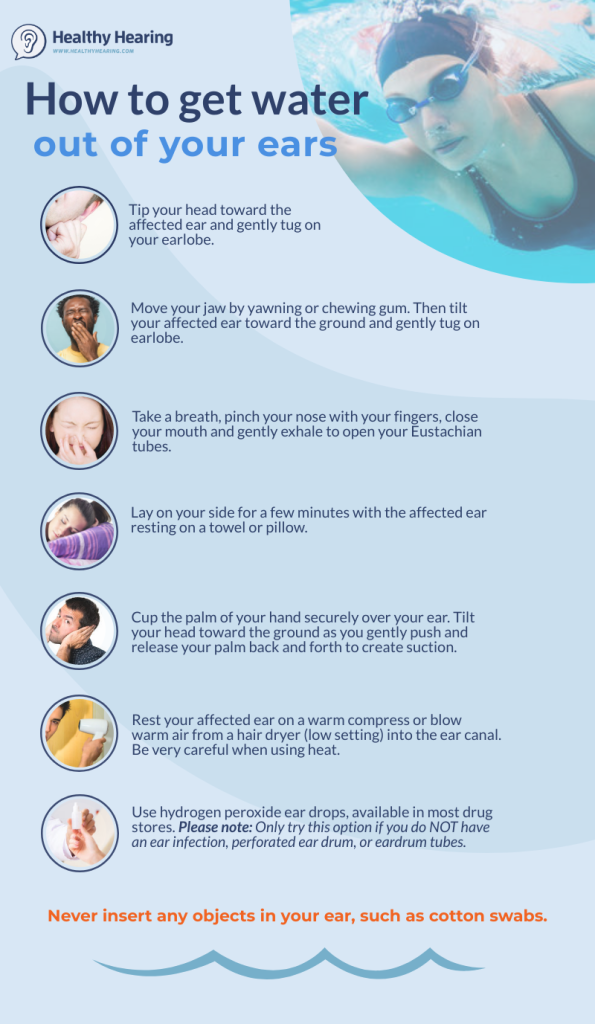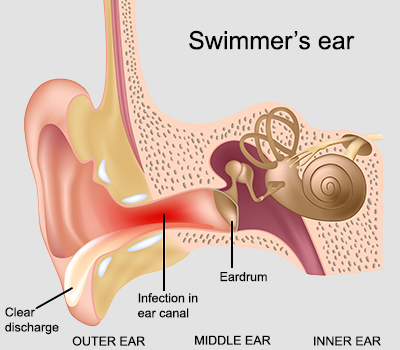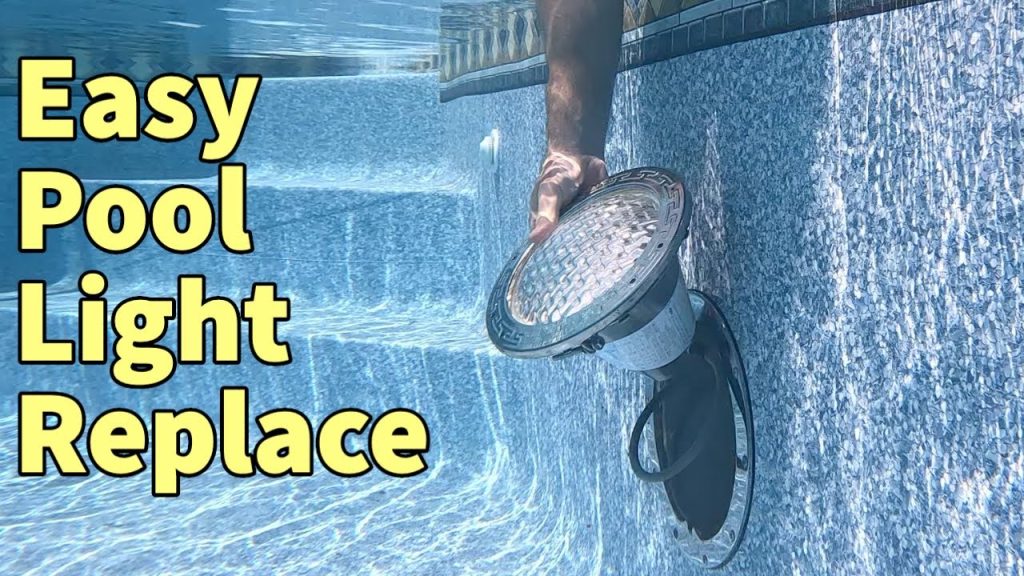Got water stuck in your ear after a swim? It’s a common issue.
Water trapped in your ear can cause discomfort. It might even lead to an infection if not addressed. Many people face this problem after swimming. It’s not just annoying; it can affect your hearing temporarily. Sometimes, the water gets stuck in the ear canal.
This can make sounds seem muffled. You might feel pressure in your ear. Don’t worry, though. There are simple methods to get the water out. You don’t need special tools or skills. Just a few easy steps can help you feel better. Read on to learn how to safely remove water from your ear.

Credit: blog.myswimpro.com
Common Causes
Water getting trapped in your ear after swimming is a common issue. It can lead to discomfort and even infections if not addressed. Understanding the common causes can help you prevent this issue.
Trapped Water
One of the most common causes is trapped water. Water can get stuck in your ear canal while swimming. This is usually due to improper ear drainage or not drying your ears properly. Once water is trapped, it may lead to a feeling of fullness or pressure in the ear.
Here are some reasons why water may get trapped:
- Failure to shake your head after swimming
- Not using earplugs
- Excessive earwax blocking the canal
Ear Canal Shape
The shape of your ear canal can also cause water to get trapped. Everyone’s ear canal is shaped differently. Some people have narrow or curved ear canals, making it hard for water to escape.
The table below highlights how different ear canal shapes can affect water drainage:
| Ear Canal Shape | Impact on Water Drainage |
|---|---|
| Straight | Water drains easily |
| Curved | Water may get trapped |
| Narrow | Higher chance of water blockage |
Recognizing these causes is the first step to keeping your ears dry and healthy.
Symptoms
Experiencing water trapped in your ear after swimming can be annoying. Recognizing the symptoms helps in addressing the issue quickly. Common symptoms include discomfort and hearing impairment. Let’s explore these in detail.
Discomfort
One of the first signs of water in your ear is discomfort. You may feel a tickling sensation inside your ear. This can extend to your jawbone or throat. The discomfort might worsen when you tilt your head.
Hearing Impairment
Another symptom is hearing impairment. The trapped water can create a blockage, making sounds muffled. You might feel like there is a plug in your ear. This can affect your daily activities.
Gravity Techniques
Getting water trapped in your ear after swimming can be uncomfortable. Gravity techniques are simple ways to remove it. These methods use gravity to help water flow out. Let’s explore some effective gravity techniques.
Head Tilt
One effective method is the head tilt. Tilt your head to the side. The affected ear should face downward. Gently pull on your earlobe. This straightens the ear canal. Gravity will help the water drain out.
Jumping Method
Another method is the jumping method. Stand on one leg. The leg should be opposite to the affected ear. Tilt your head so the affected ear faces downward. Hop on one foot a few times. The motion and gravity can help the water escape.
.jpg)
Credit: www.healthyhearing.com
Vacuum Methods
After a fun swim, water can get trapped in your ear. This can be annoying and sometimes painful. One effective way to remove water is through vacuum methods. These techniques use suction to draw the water out. Let’s explore some easy methods.
Palm Suction
This method uses the palm of your hand to create suction. Here’s how:
- Place your palm over the affected ear.
- Press gently to create a tight seal.
- Quickly tilt your head sideways and remove your hand.
This motion creates a vacuum that pulls the water out. Repeat if needed until the ear feels clear. This method is simple and often effective.
Finger Suction
The finger suction method is another easy way to remove water. Follow these steps:
- Insert your index finger into the ear canal.
- Gently push and pull your finger to create a seal.
- Move your finger in a circular motion to create suction.
Be gentle to avoid hurting your ear. This method can help dislodge and remove trapped water. It is quick and can be done anytime.
Ear Drops
Getting water stuck in your ear after swimming can be annoying. Ear drops can help. They can clear water from your ears and prevent infections. Let’s explore different types of ear drops you can use.
Over-the-counter Drops
Over-the-counter drops are available in most drugstores. They are easy to use and effective. Here are some popular options:
- Swimmer’s Ear Drops: These drops dry out water and soothe ear discomfort.
- Alcohol-Based Drops: These help evaporate water trapped inside the ear.
- Hydrogen Peroxide Drops: These can help clear wax and water from the ear.
Homemade Solutions
You can also make your own ear drops at home. They are simple and cost-effective. Here are a few recipes:
- Vinegar and Alcohol: Mix equal parts of white vinegar and rubbing alcohol. Use a dropper to put a few drops in the ear.
- Warm Olive Oil: Warm a small amount of olive oil. Use a dropper to place a few drops in the ear. This can help soften wax and release trapped water.
- Hydrogen Peroxide: Mix equal parts of hydrogen peroxide and water. Use a dropper to put a few drops in the ear. It helps to fizz out water.
These solutions can clear water from your ears effectively.
Drying Methods
After a fun swim, sometimes water gets trapped in your ear. This can be annoying and even lead to infections. There are simple drying methods you can use to remove water from your ear safely and effectively. Below, we explore two common methods: using a hair dryer and a towel.
Hair Dryer
A hair dryer can help dry out the water in your ear. Follow these steps:
- Set the hair dryer to the lowest heat setting.
- Hold the dryer at least a foot away from your ear.
- Gently tug on your earlobe to open the ear canal.
- Move the dryer back and forth to ensure the air circulates.
Using a hair dryer in this way can help evaporate the trapped water.
Towel Use
A towel is another effective tool to remove water from your ear. Here’s how to use it:
- Gently tilt your head to the side of the affected ear.
- Place a soft towel against your ear.
- Allow the towel to absorb the water by gently pressing it.
- Repeat on the other side if needed.
This method is simple and minimizes any risk of ear damage.
Precautionary Measures
Swimming is fun, but water in the ear can cause discomfort. Taking simple precautions can help prevent this issue. Here are some effective ways to keep your ears dry while swimming.
Ear Plugs
Using ear plugs is a great way to keep water out. They create a seal that blocks water from entering the ear canal. Ear plugs come in various types:
- Silicone ear plugs: Moldable and comfortable.
- Pre-molded ear plugs: Ready-to-use and reusable.
- Custom-fitted ear plugs: Made to fit your ears perfectly.
Choose the type that best suits your needs. Clean them regularly to prevent infections.
Swim Caps
Wearing a swim cap can also help keep your ears dry. Swim caps cover your head and ears, providing an additional barrier against water. Here are some types of swim caps:
| Type | Features |
|---|---|
| Silicone caps | Durable and snug fit. |
| Latex caps | Lightweight and inexpensive. |
| Lycra caps | Comfortable but less water-resistant. |
Choose a swim cap that fits well and suits your swimming style. Combining ear plugs and a swim cap offers the best protection against water entering your ears.
When To See A Doctor
After swimming, water can sometimes get trapped in your ear. This can be uncomfortable. Usually, the water will drain out on its own. But, there are times when you need to see a doctor.
Persistent Water
If water stays in your ear for more than a few days, it can cause problems. Persistent water can lead to infections or other issues. You may feel a tickling sensation or hear muffled sounds. If these symptoms last, it’s best to seek medical advice. Here are some signs to watch for:
- Water trapped for over 48 hours
- Hearing loss
- Persistent tickling in the ear
Infection Signs
Trapped water can lead to ear infections. Infection signs are important to recognize. These can include:
- Pain in the ear
- Redness or swelling
- Discharge from the ear
- Itching inside the ear
- Fever
If you notice any of these signs, see a doctor. Ear infections can become serious if not treated. A doctor can provide the right treatment and prevent further complications.

Credit: www.hearingpartners.com.sg
Frequently Asked Questions
How Can I Get Water Out Of My Ear?
Tilt your head to the side and gently tug your earlobe. Gravity helps the water drain out.
What Are Some Home Remedies For Water In Ear?
Try using a hairdryer on the lowest setting. Keep it several inches from your ear.
Is It Dangerous To Have Water In Your Ear?
Yes, it can cause infections or swimmer’s ear. Remove it promptly to avoid complications.
Can I Use Ear Drops To Remove Water?
Yes, over-the-counter ear drops help evaporate the water. Follow the instructions on the packaging.
Conclusion
Dry ears are important for good health. Use these simple tips next time. Tilt your head. Use gravity. Try a warm compress. Stay safe and enjoy swimming. Keeping water out of ears prevents infections. Share these tips with friends. Happy swimming!



